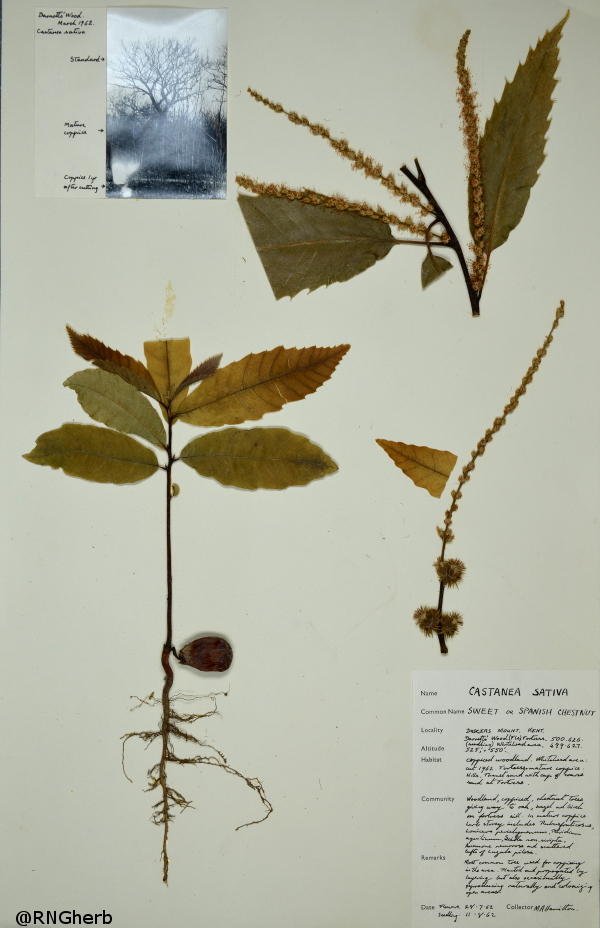By Mary Williams

My December buzzes along to the tune of “Chestnuts roasting on an open fire…,” otherwise known as The Christmas Song; Nat King Cole’s beautiful rendition will get you in the chestnut mood.
Throughout the Northern Hemisphere, freshly roasted chestnuts are the ultimate winter street food. Not only are they delicious but they warm your fingers as well as your belly. Chestnuts have a long association with Christmas and are commonly served in winter feasts (recipes here and here).
There are several species of chestnut found throughout the Northern Hemisphere, all producing edible nuts of differing sizes and qualities. [Note that the abundant horse chestnut trees (conkers) found throughout the UK are in the genus Aesculus and are unrelated to edible chestnuts, and that water chestnuts, Eleocharis dulcis, also are unrelated and not nuts at all.] Historical records show that European sweet chestnuts (Castanea sativa) have been cultivated in the Mediterranean region for more than 3000 years.
Read more about Sweet Chestnuts and their Christmas traditions in the full blog by Mary Williams at Plant Science Today.
Advent Botany 2015 Day 10, Day 12
Index to Advent Botany 2015
